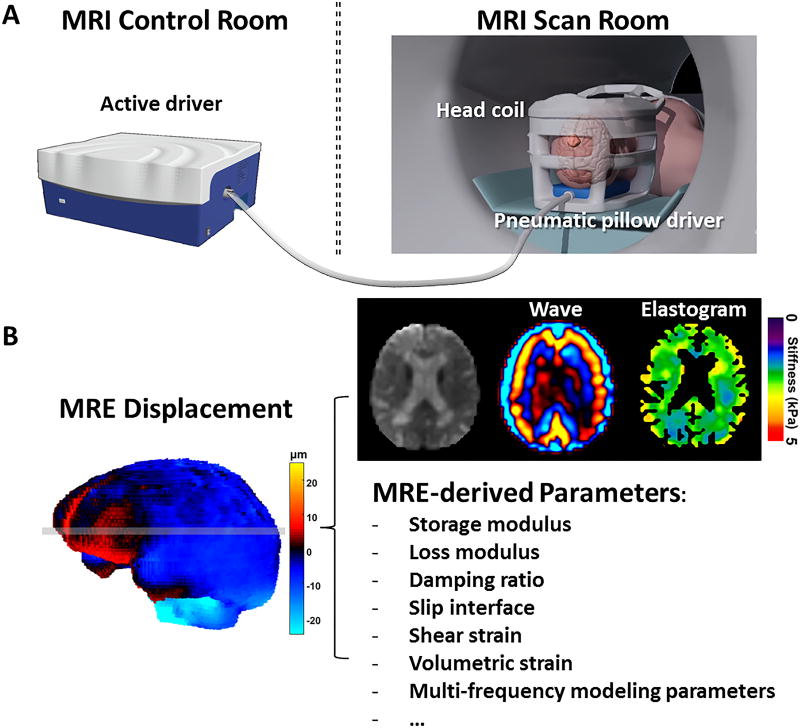Probleemstelling:
Intracranial pressure is elevated in patients with traumatic brain injury and in neurological disorders as hydrocephalus or Chiari malformation. It is a vital physiological parameter which, unfortunately, cannot be assessed in a non-invasive way. However, given the poroelastic nature of the brain parenchyma and its mechanical confinement within the skull, we hypothesize that theer is a coupling between the interstitial pressure in the brain and the functional stiffness of the tissue. The latter can be measured using Magnetic resonance elastography (MRE), a non-invasive tool to infer the stiffness and viscoelastic properties of the brain and spinal cord from the propagation of mechanically induced shear waves. Our hypothesis is supported by a recent study, where MRE during Valsalva (elevated intrathoracic pressures, known to lead to an increased intracranial pressure) showed transiently elevated brain stiffness.
MRE involves 3 steps: (i) mechanical actuation to induce shear waves using an internal (arterial pulsations) or external vibrating source; (ii) imaging tissue displacements, and (iii) converting tissue displacements into stiffness properties (an elastogram) using an inversion algorithm. Inversion algorithms assume underlying isotropic linear elastic/viscoelastic constitutive material properties. In this thesis, the main focus is on step (iii), where we want to expand our experience in experimental and in-silico modelling of (ultrasound) shear wave elastography in complex anisotropic cardiovascular tissues to the brain and central nervous system.
